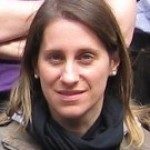Link to Pubmed [PMID] – 15165246
Mol. Microbiol. 2004 Jun;52(5):1451-62
One hundred and twenty Candida albicans clinical isolates from the late 1980s and early 1990s were examined for homozygosity at the MTL locus. Of these, 108 were heterozygous (MTLa/MTLalpha), whereas seven were MTLa and five were MTLalpha. Five of the homozygous isolates were able to switch to the opaque cell morphology, while opaque cells were not detectable among the remaining seven. Nevertheless, all but one of the isolates homozygous at the MTL locus were shown to mate and to yield cells containing markers from both parents; the non-mater was found to have a frameshift in the MTLalpha1 gene. In contrast to Saccharomyces cerevisiae, C. albicans homozygotes with no active MTL allele failed to mate rather than mating as a cells. There was no correlation between homozygosity and fluconazole resistance, mating and fluconazole resistance or switching and fluconazole resistance, in part because most of the strains were isolated before the widespread use of this antifungal agent, and only three were in fact drug resistant. Ten of the 12 homozygotes had rearranged karyotypes involving one or more homologue of chromosomes 4, 5, 6 and 7. We suggest that karyotypic rearrangement, drug resistance and homozygosity come about as the result of induction of hyper-recombination during the infection process; hence, they tend to occur together, but each is the independent result of the same event. Furthermore, as clinical strains can mate and form tetraploids, mating and marker exchange are likely to be a significant part of the life cycle of C. albicans in vivo.
